TunisiaMapOctober 12–14, 2009 A thermal imaging camera hooked up to a monitor greets everyone landing at the airport in Tunisia. Every passenger can take a look at the temperature of various parts of their body, their head, their glasses, caps, cameras and so on. A hunt for carriers of the mythical swine flu is underway.  There are elections coming up. 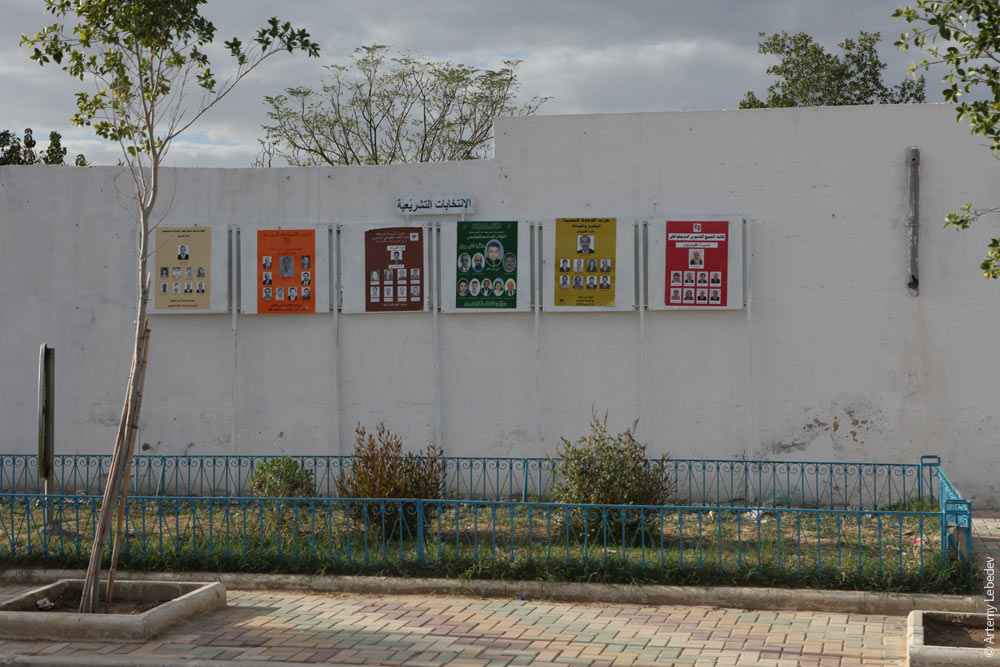 The acting president is advertising himself with a gesture meant to symbolize the utmost devotion to his audience, but it looks like he forgot to adjust his cuff link. 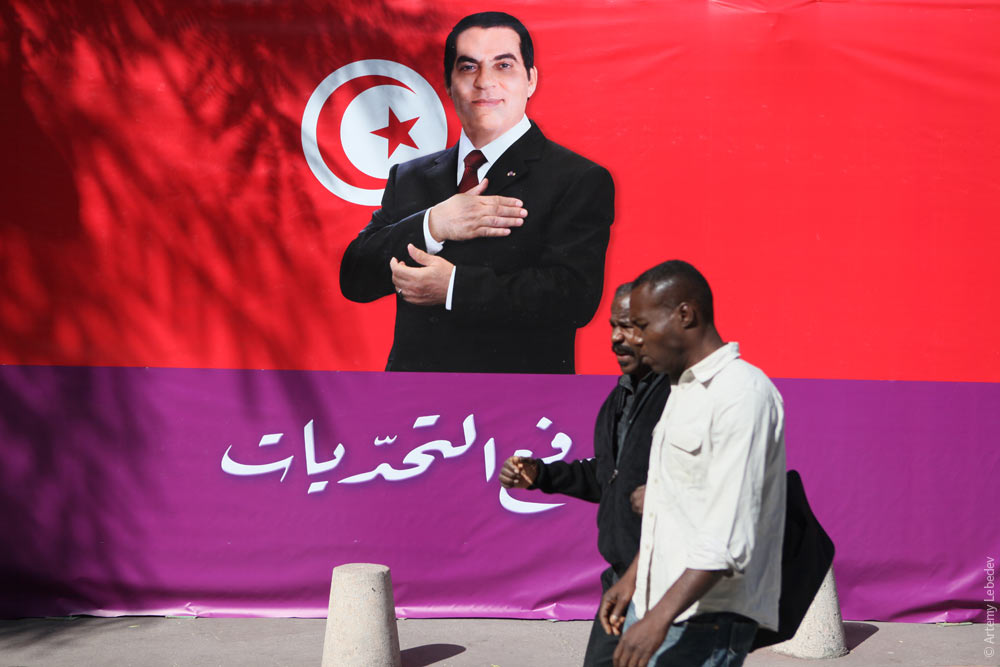 Parking permits and inspection stickers are becoming more and more ugly with each year. 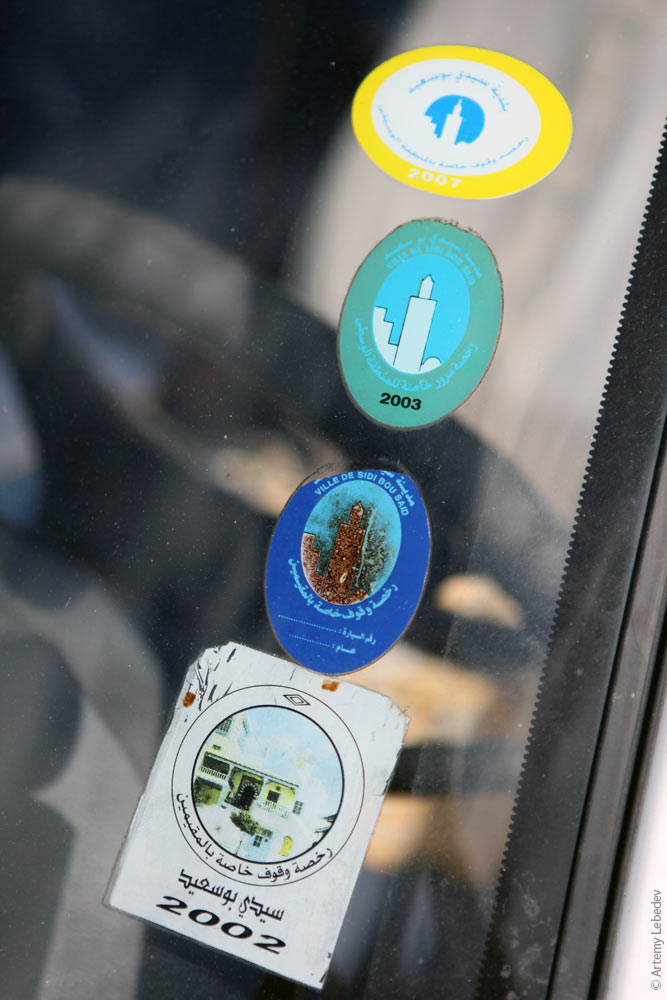 Tunisian license plates are usually black. They’re made and sold at metal shops—you can pick whichever one you like. 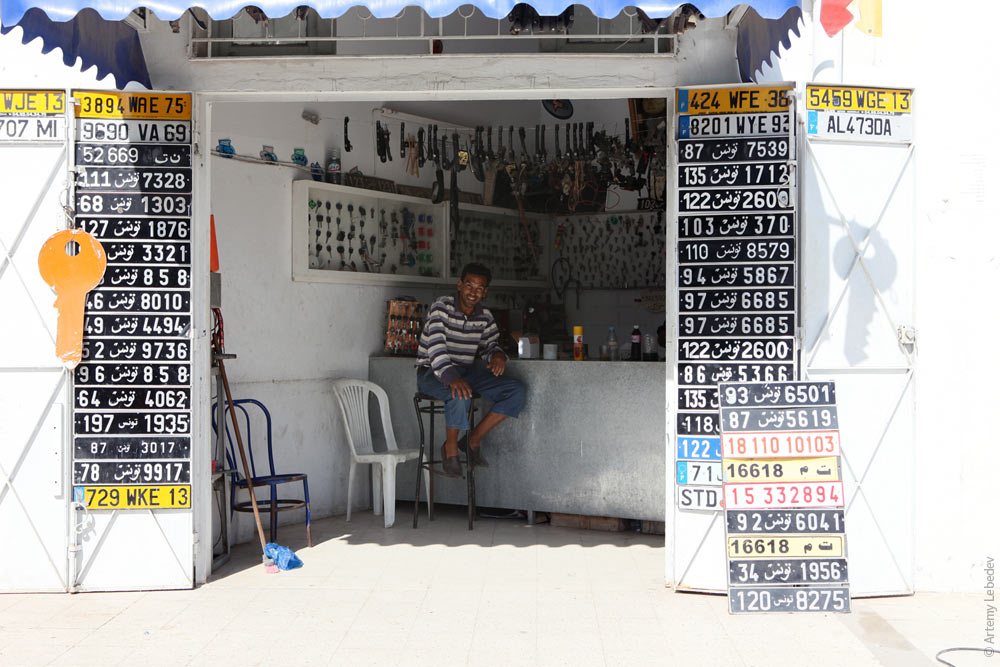 Rental cars have blue plates, perhaps to make it easier to keep tabs on tourists. 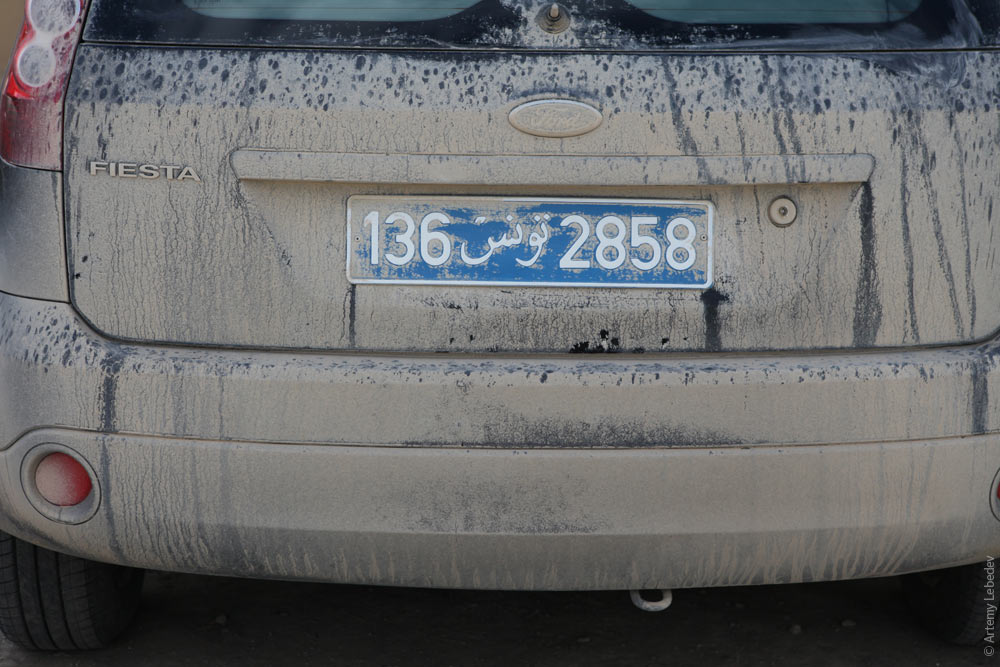 The post boxes all have rounded top left and right corners. 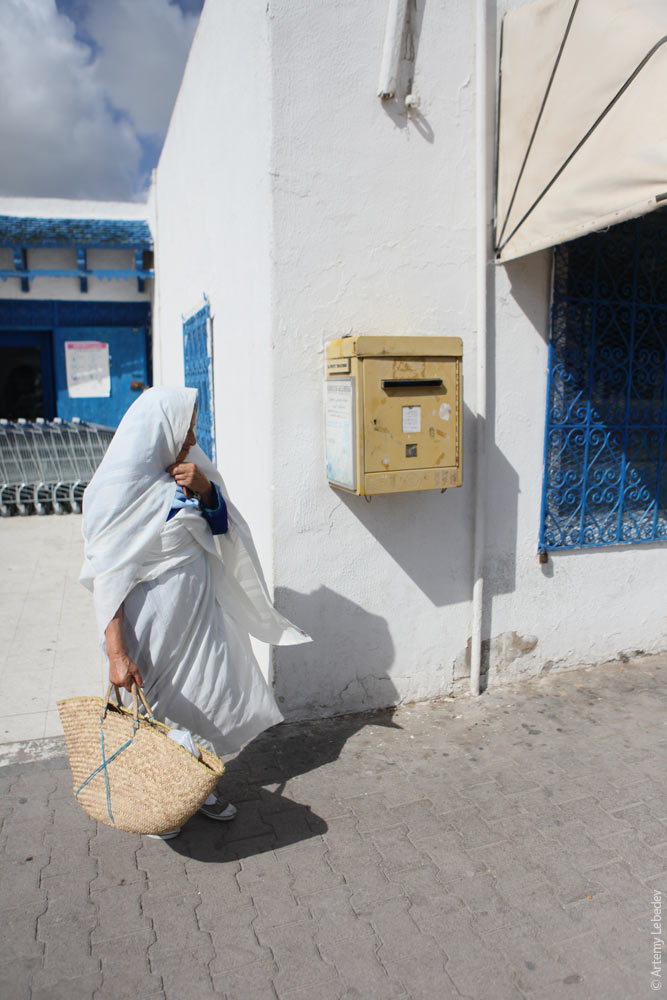 A fire hydrant. 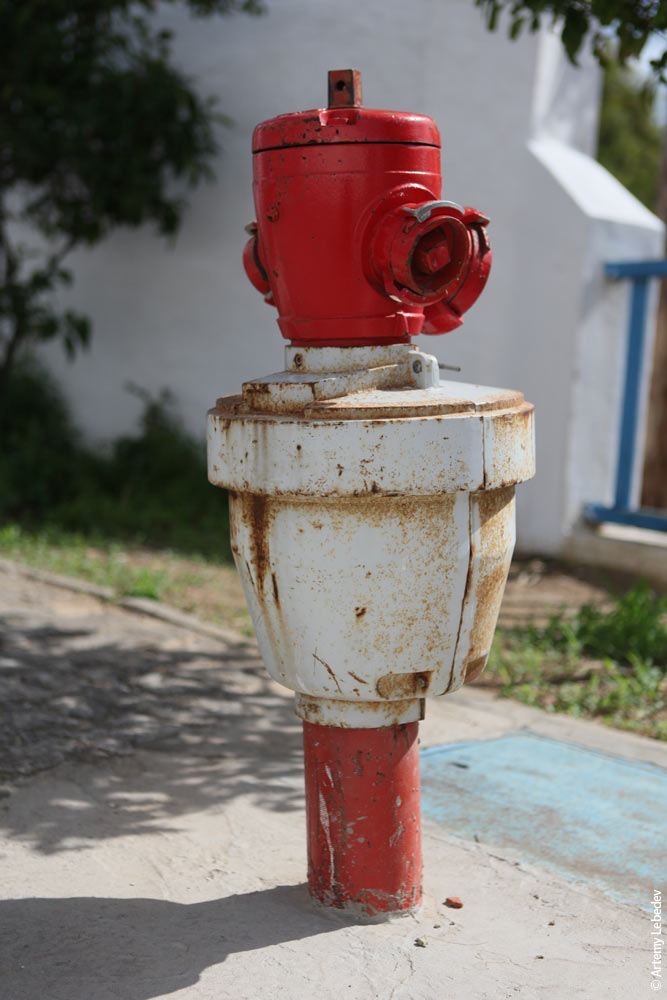 All the trash cans in Tunisia are mesh, in order to better ventilate their contents.  A sign indicating the direction of traffic around an obstacle (I also saw one like this in Algeria). 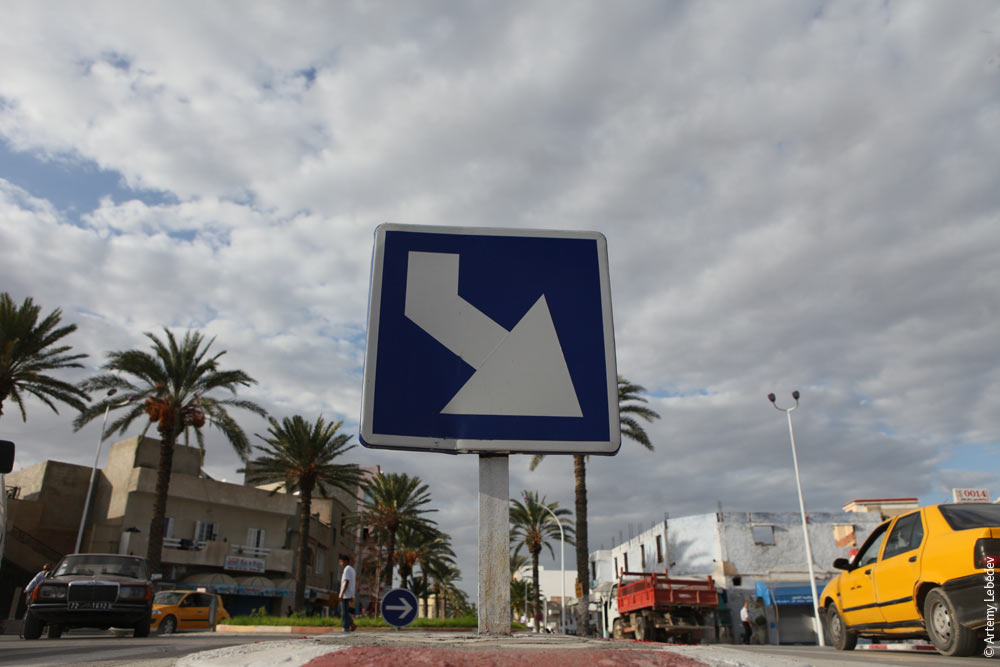 Headsplosion (transporting hazardous materials in passenger vehicles is prohibited). 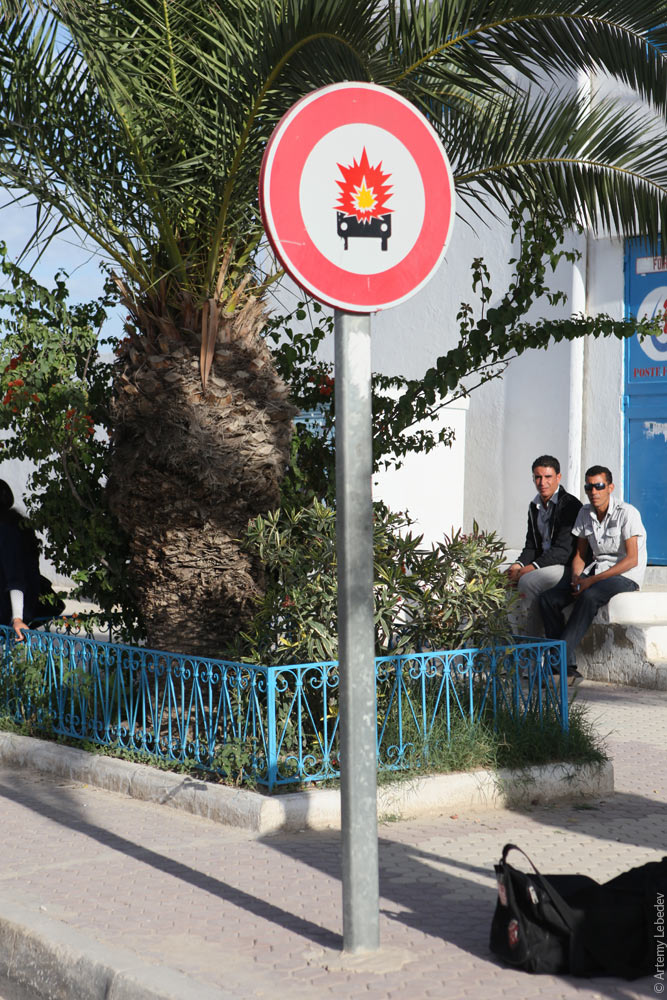 A first-aid kit at a lingerie factory. 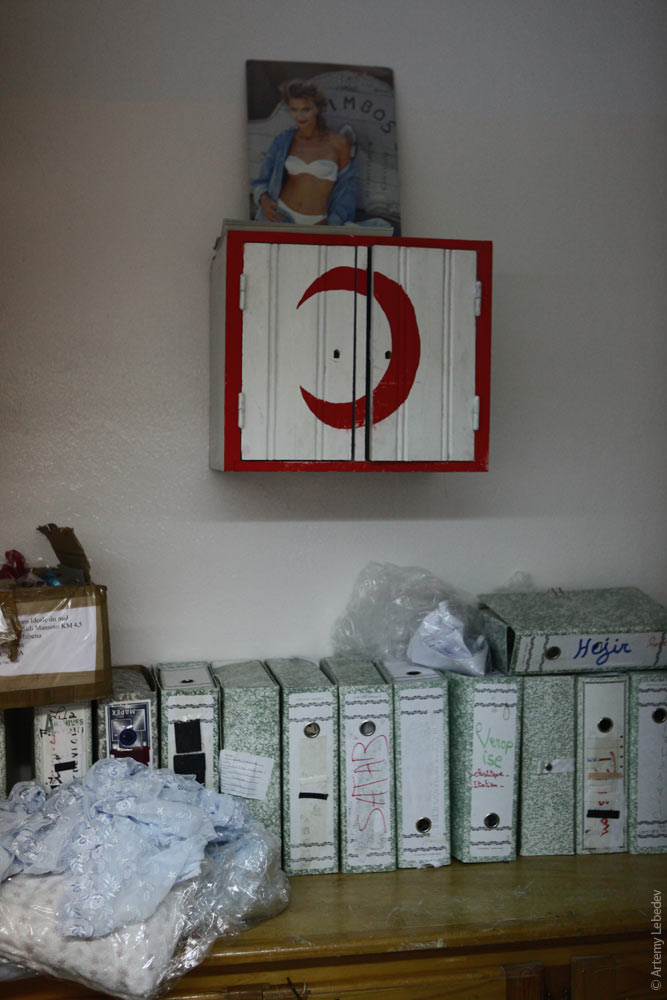 Samples of pleats that can be created at an ironing shop. 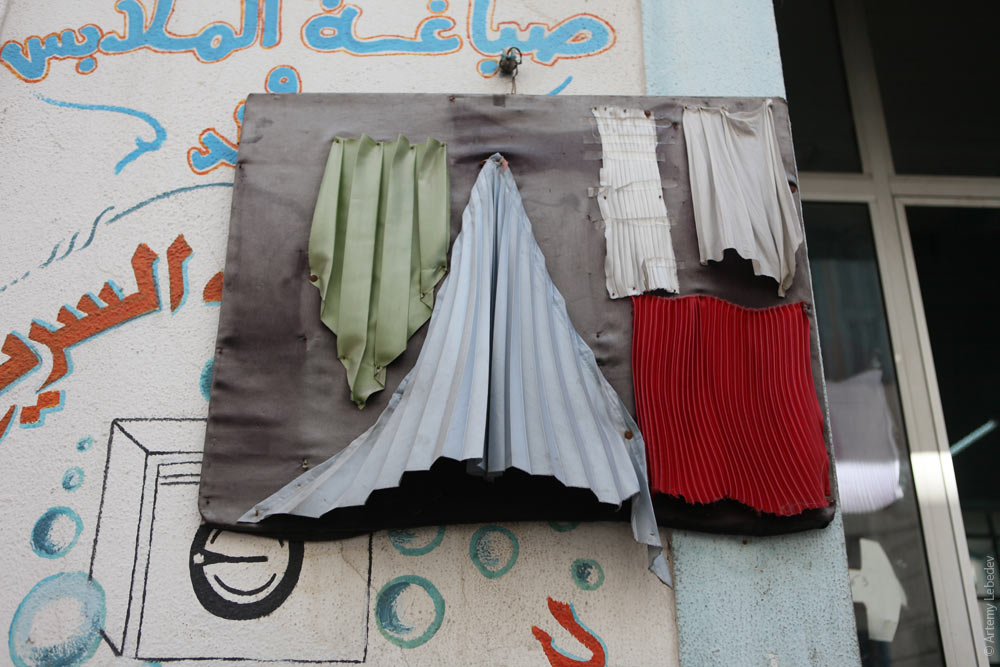 There are little blue doors with stenciled numbers on the wall of every building, with water meters concealed behind them. 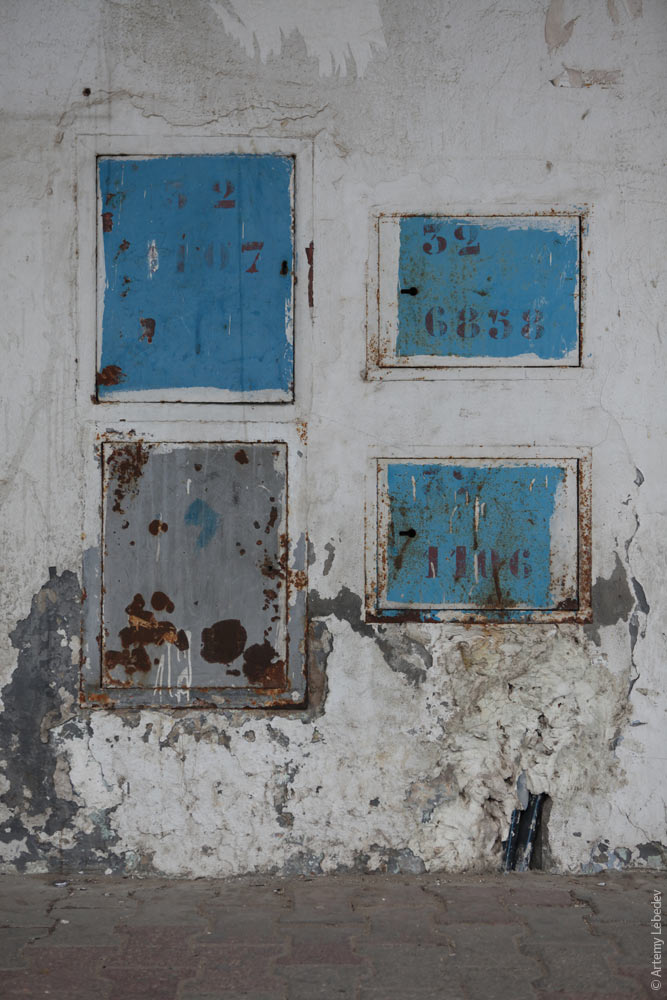 The most popular kind of decoration is an ornament composed of nail heads. 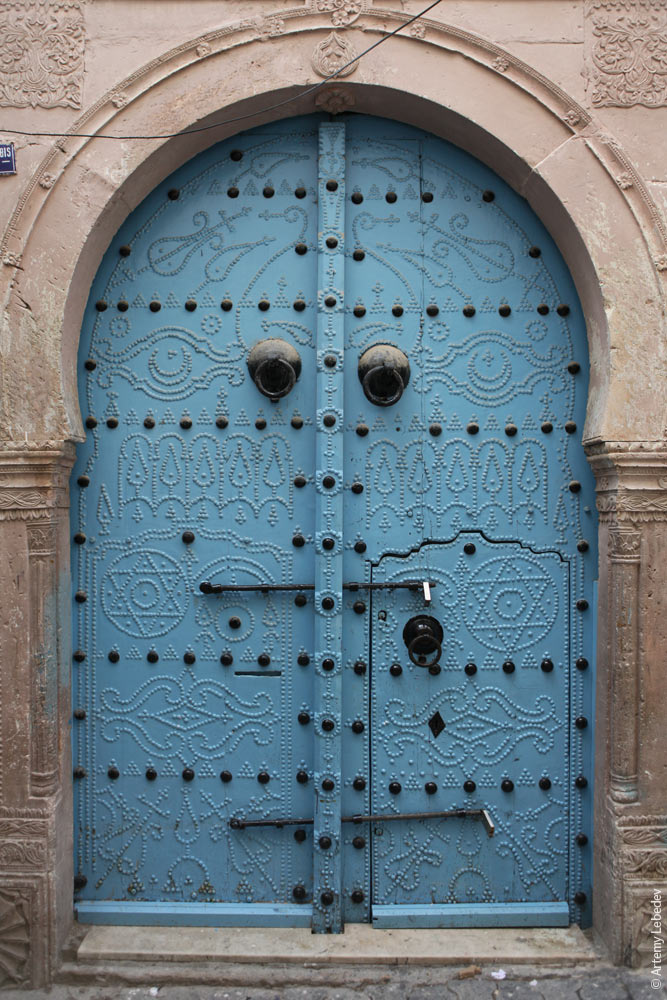 Another popular architectural motif: columns flanking an entryway or window. 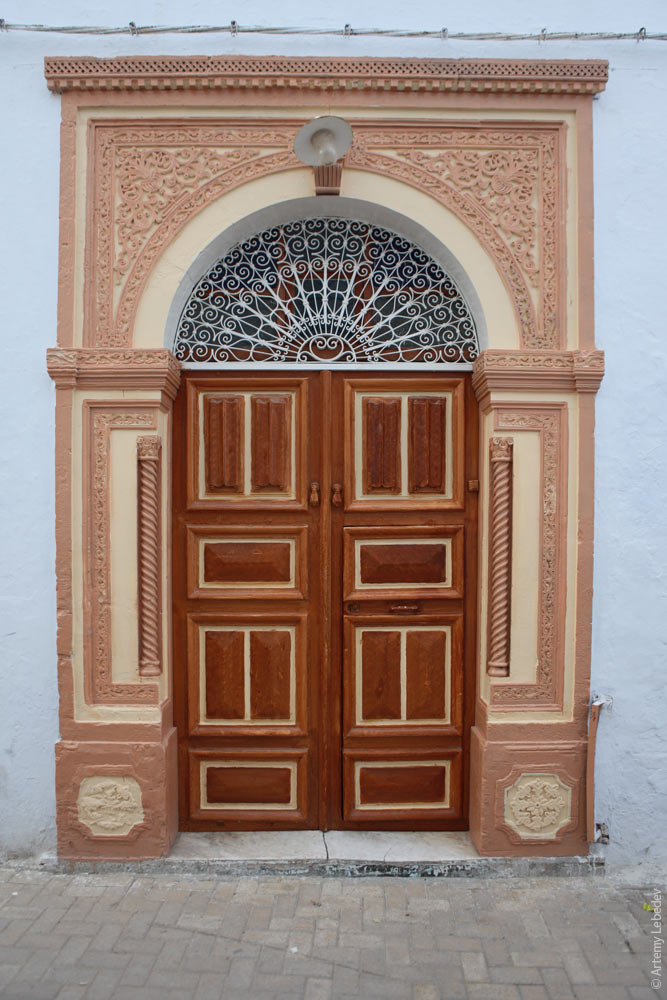 This motif has a very specific historical explanation: the Arabs used to actively snatch and repurpose stones and various elements from the ruins of ancient Roman cities. Apparently a poor person couldn’t afford to just grab a couple of columns, but the rich could easily do so. The columns are sturdy and pretty, after all. 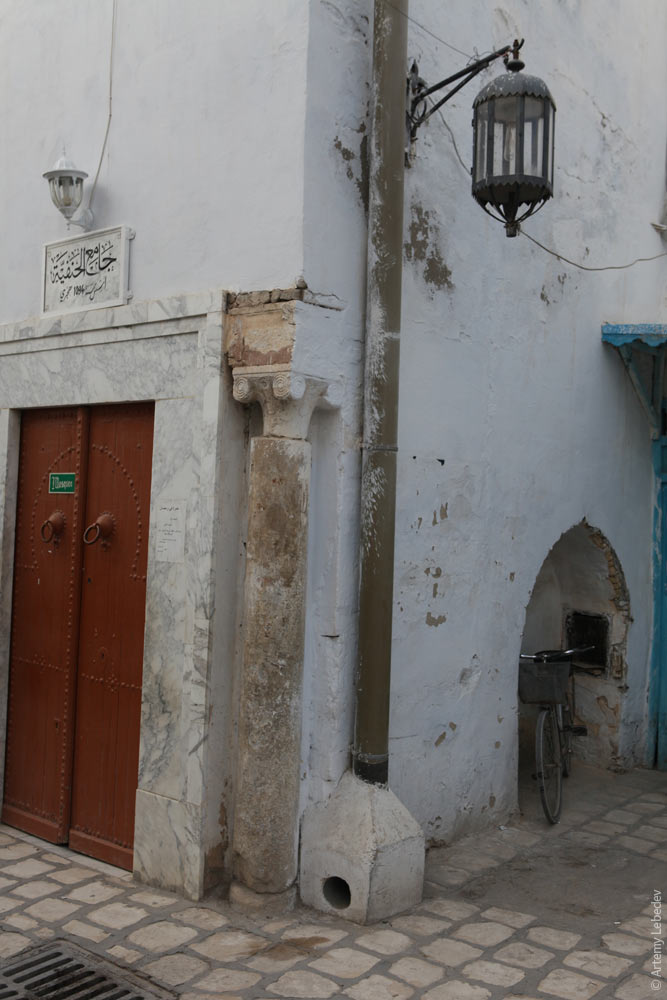 If you look closely, you’ll see plenty of these columns all along the Arab Mediterranean coast. 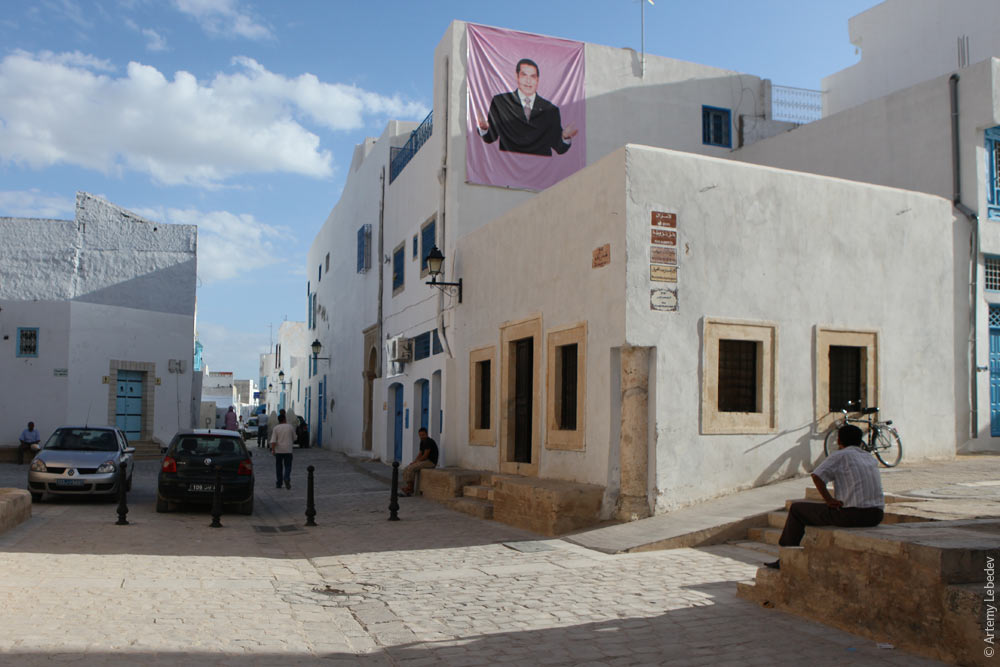 All the pickup trucks in the country have functional extra-tall sides. They transport a lot of cargo here, and Tunisians view the standard-issue sides as a joke. 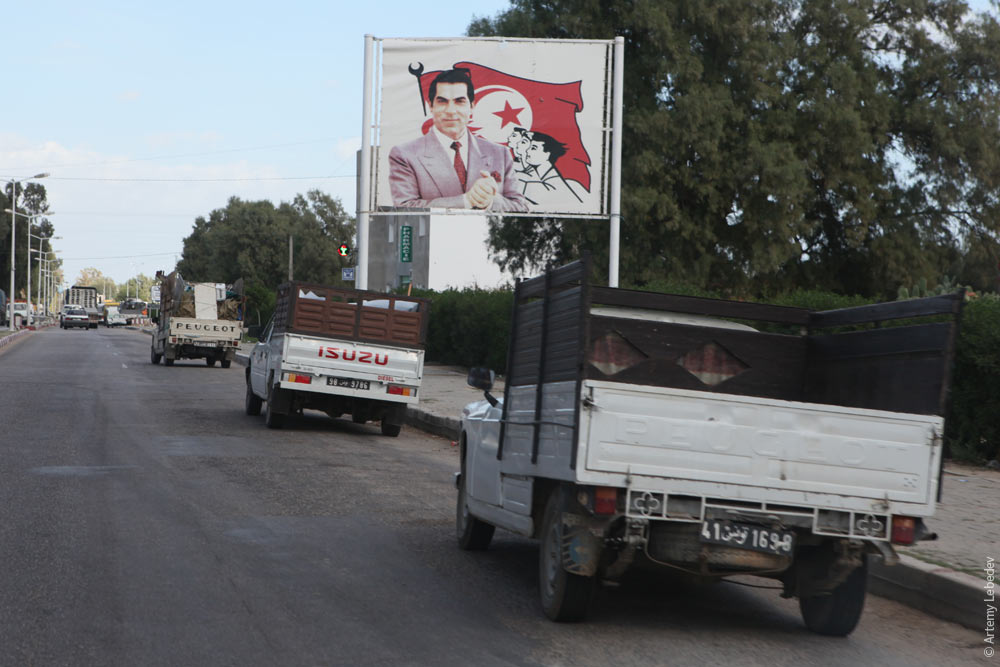 The cities in Tunisia aren’t all that different from one another, but each city definitely has its own interesting characteristics. TunisMapTunis is the capital of Tunisia. They have special extendible barriers here. 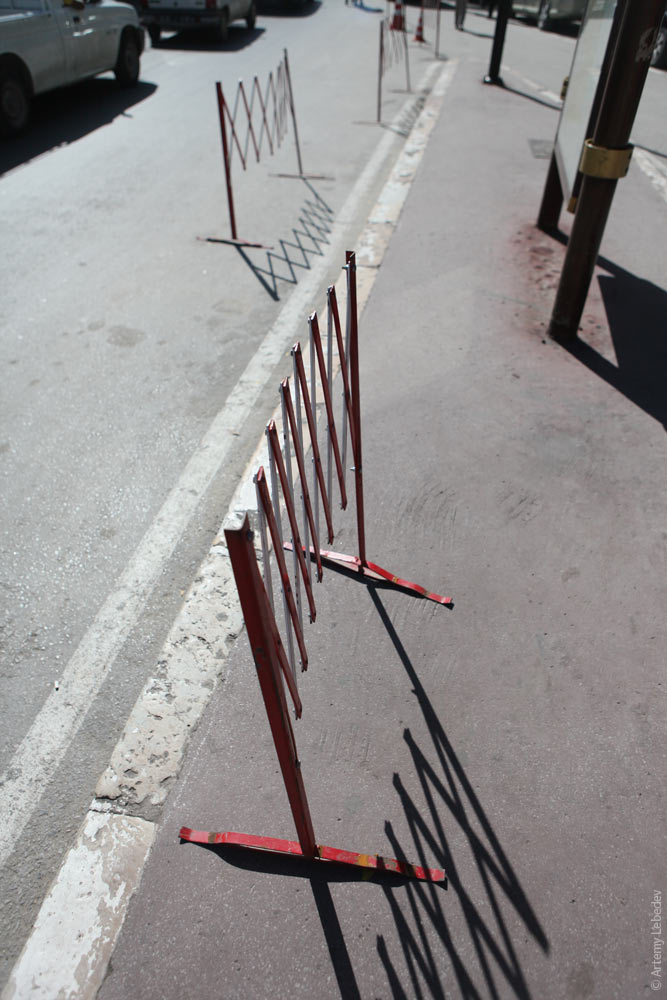 They have incredibly long trams here (almost as long as in Budapest). 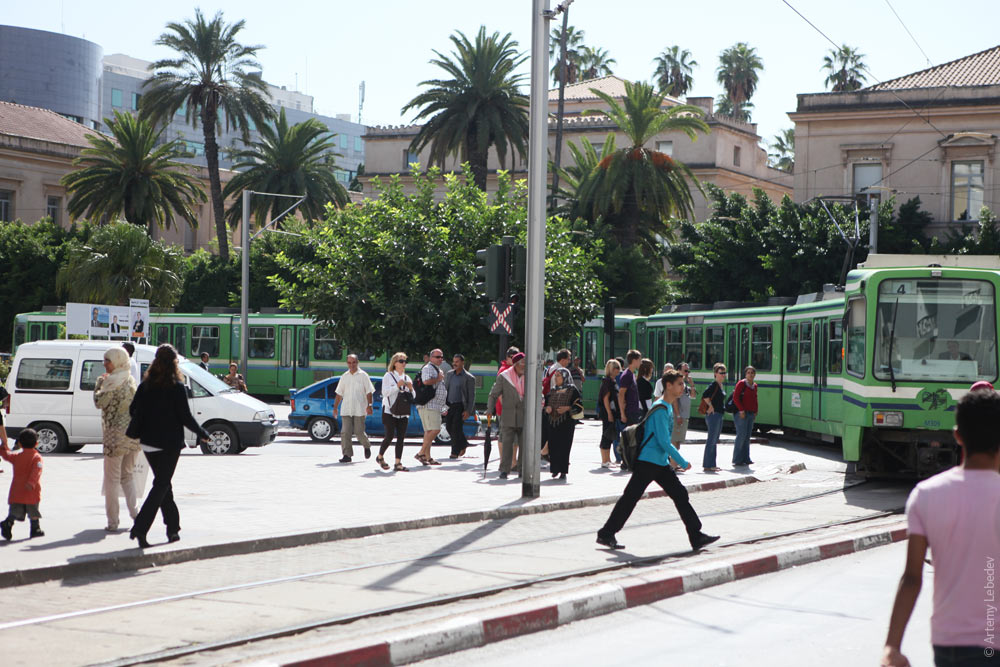 But most importantly, all the road signs have an extra decorative hoop here. 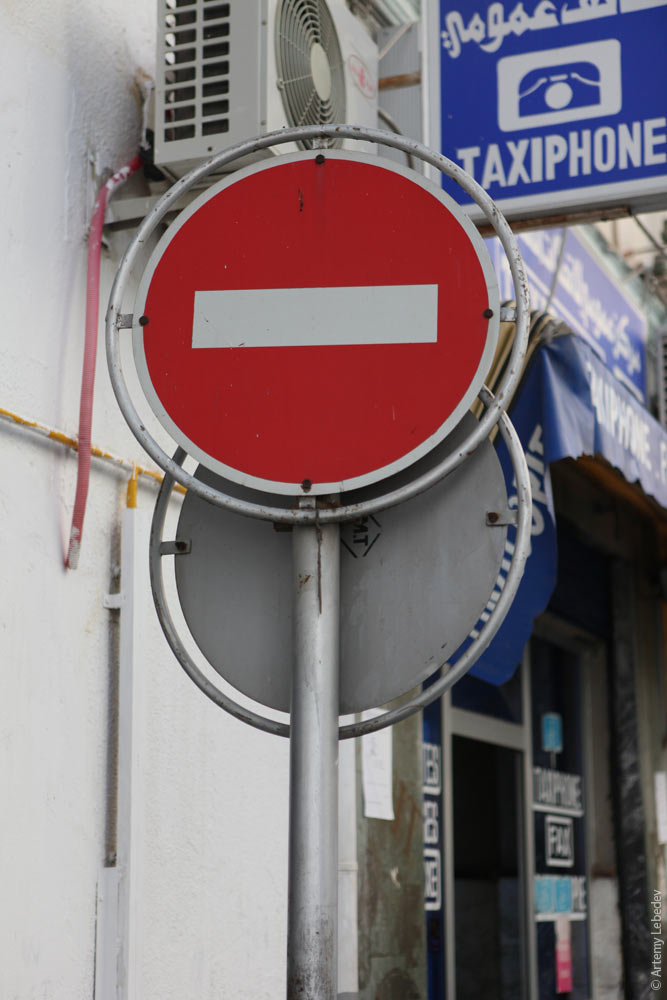 SfaxMapIrrigation ditches are laid between the asphalt and the curb here. 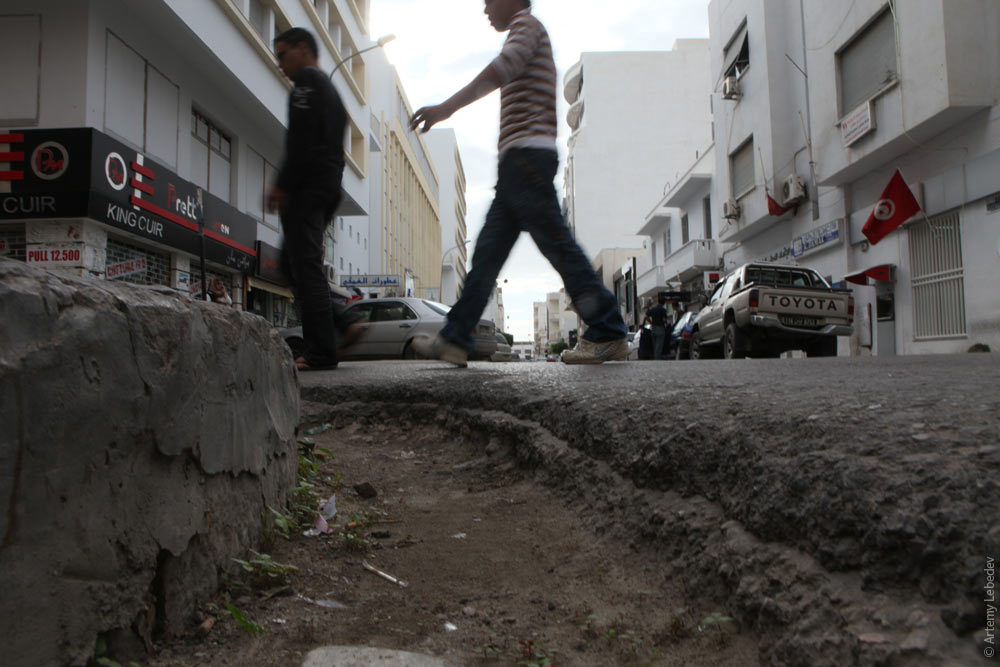 Storm drain grates are neither on the roadway nor tucked into the sidewalk here—they’re situated between the two and at an angle. 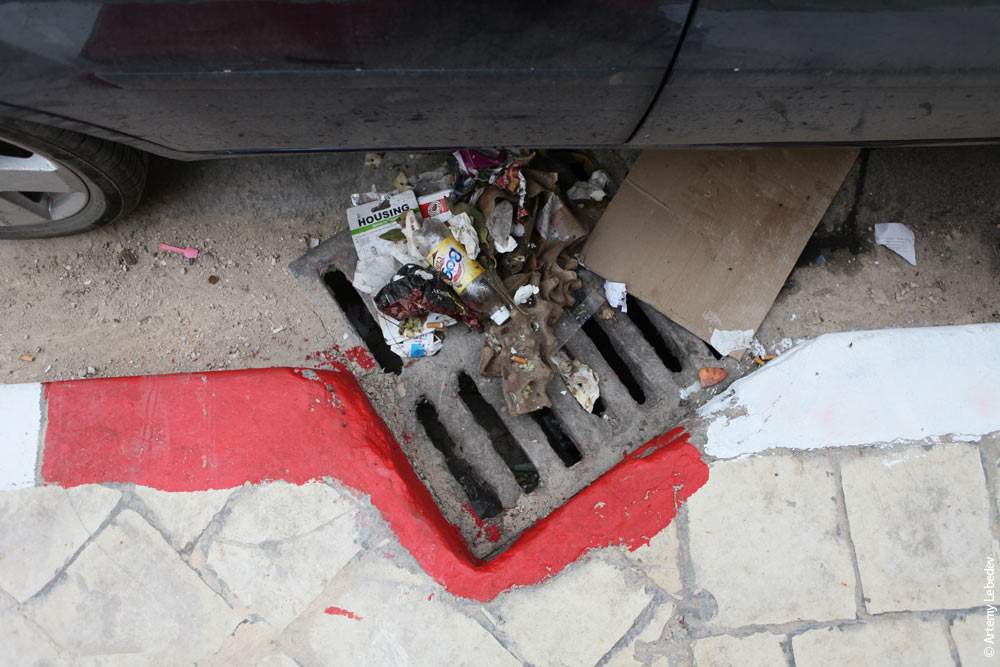 Also, only pharmacies can have flashing signs here. Other signs are allowed only simple illumination. 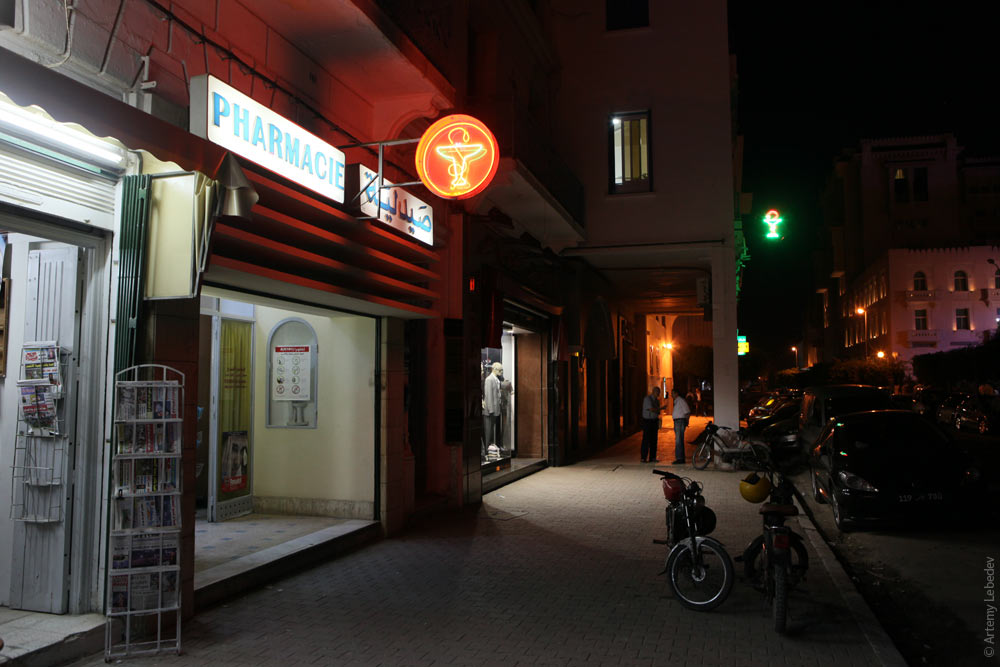 KairouanMapHere, if you approach the Old City at ten to four in the middle of October, a sunbeam will reflect off the minaret spire of Africa’s first mosque directly into your eye.  They also make beautiful hand-woven carpets here. 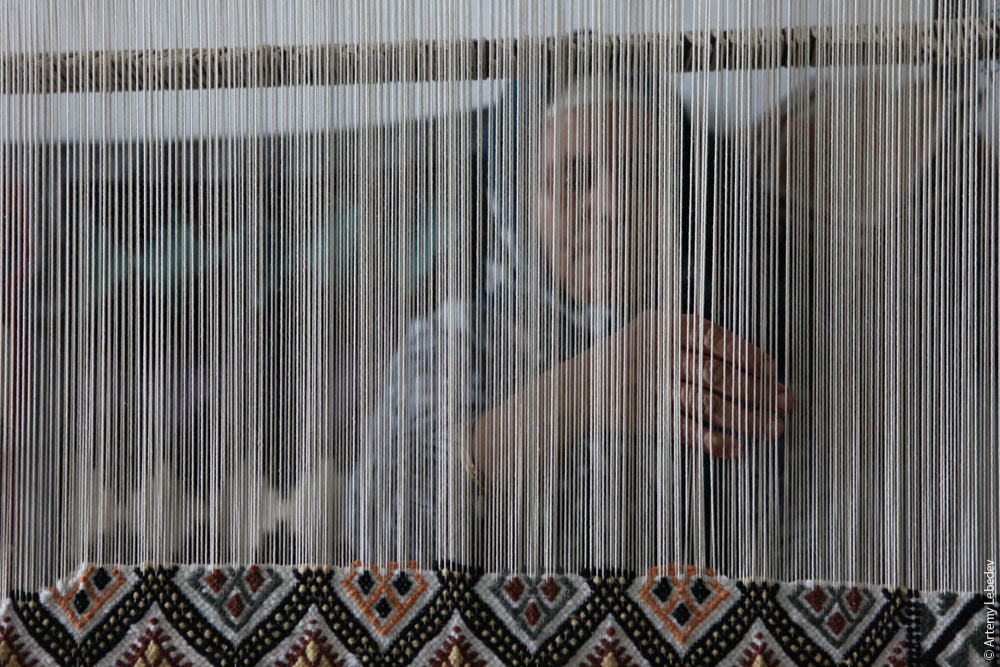 SbeitlaMapThere’s a wonderful ancient Roman temple complex here.  And a bunch of streets with wall foundations that give you a good idea of the former buildings’ size. 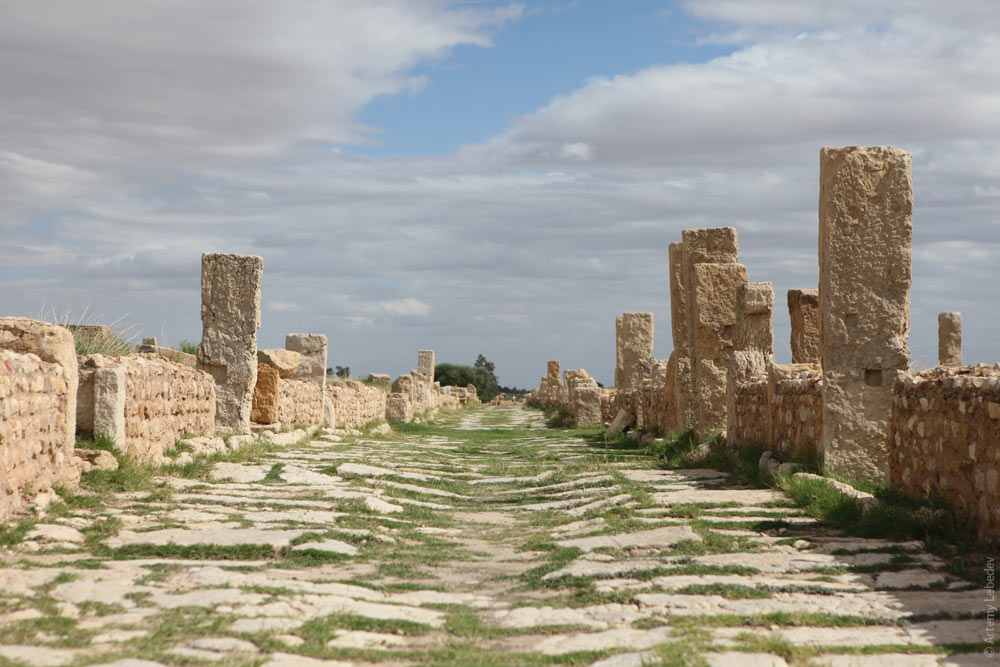 Sidi Bou SaidMapA sort of Tunisian Zhukovka. 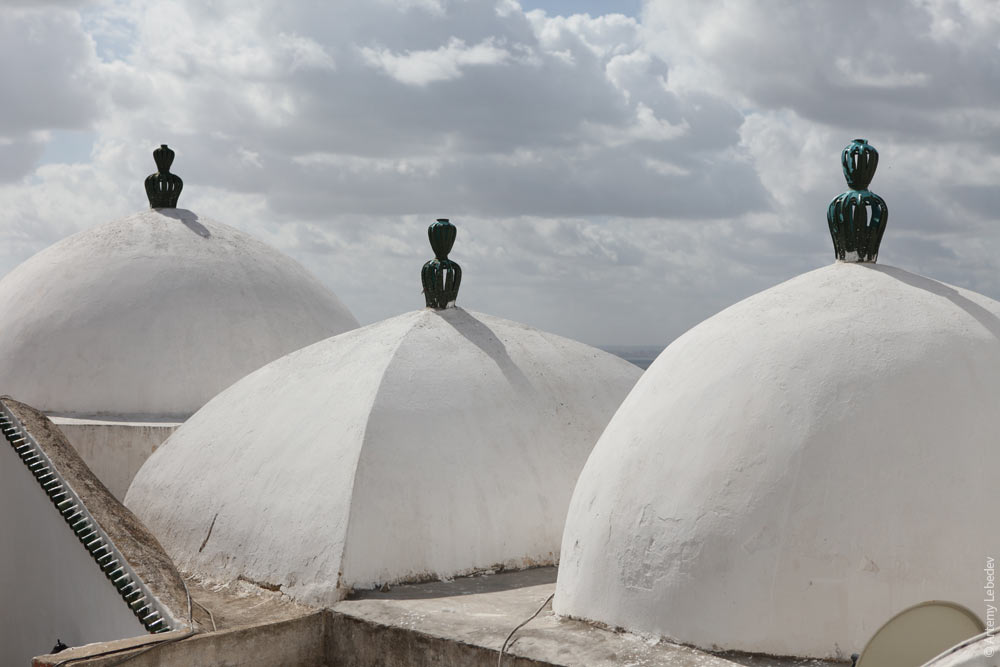 All the doors are painted blue here (although there are also a couple of yellow ones). 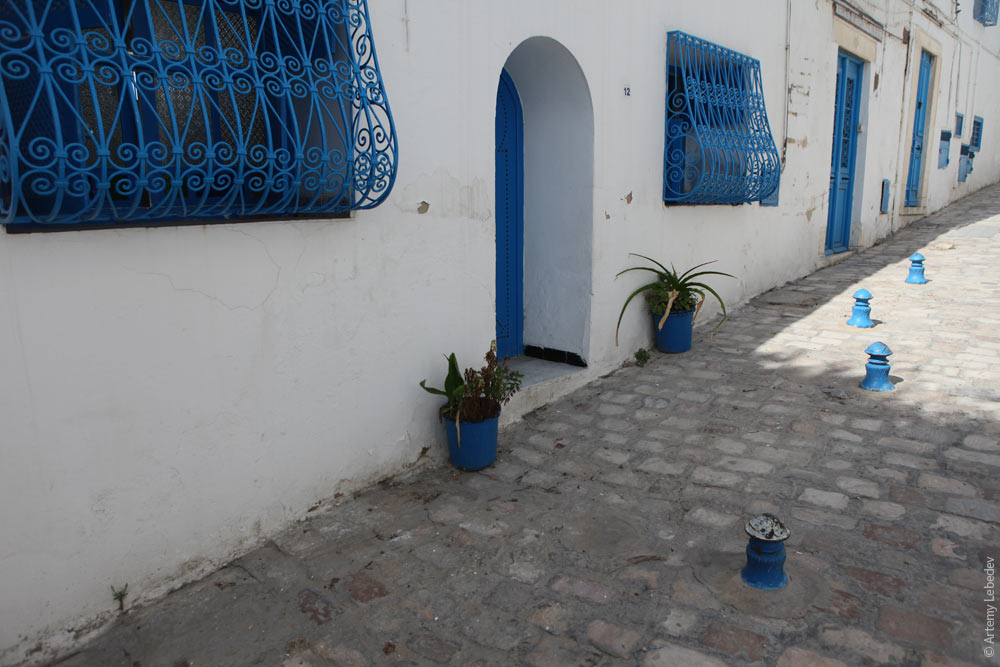 This area has the highest concentration of tourist attractions and tourists. 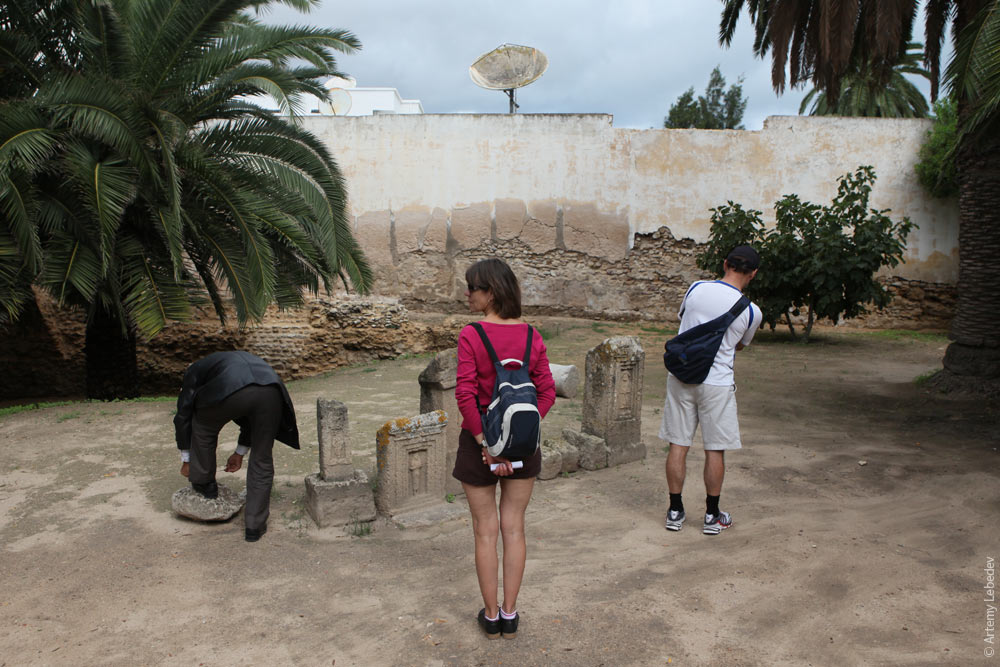 The Antonine Baths are located on the seaside just outside this small city, but it’s better to venture deeper into the country. Everything here has been trampled over by barbaric conservationists and crowds of tourists to the point of losing all attractiveness. 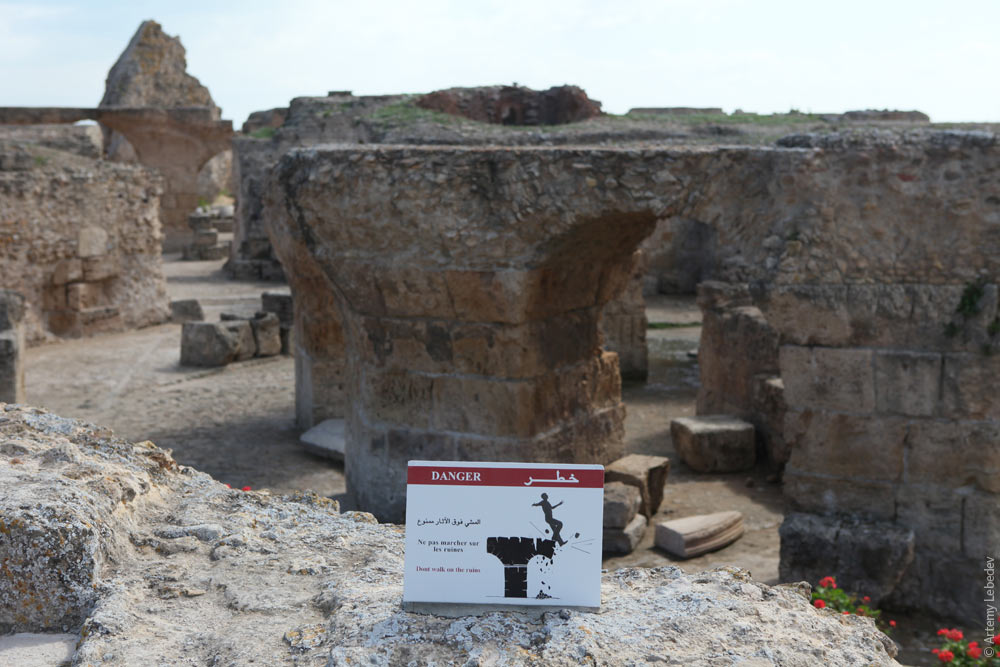 El JemMapThere’s a beautiful and almost fully intact Roman stadium situated here. 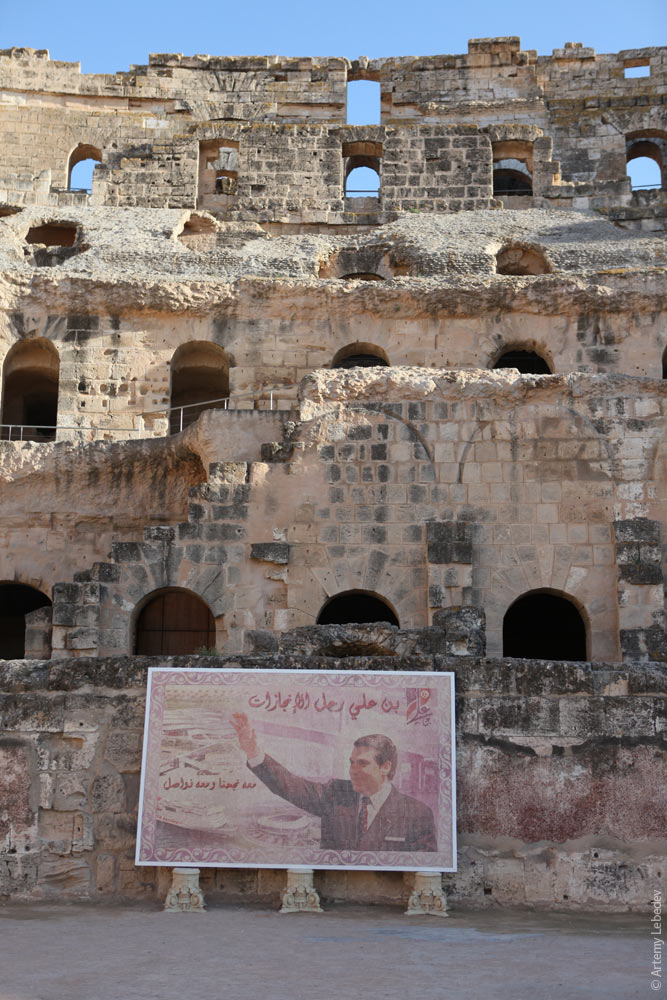 There are also oranges situated on the tables here. 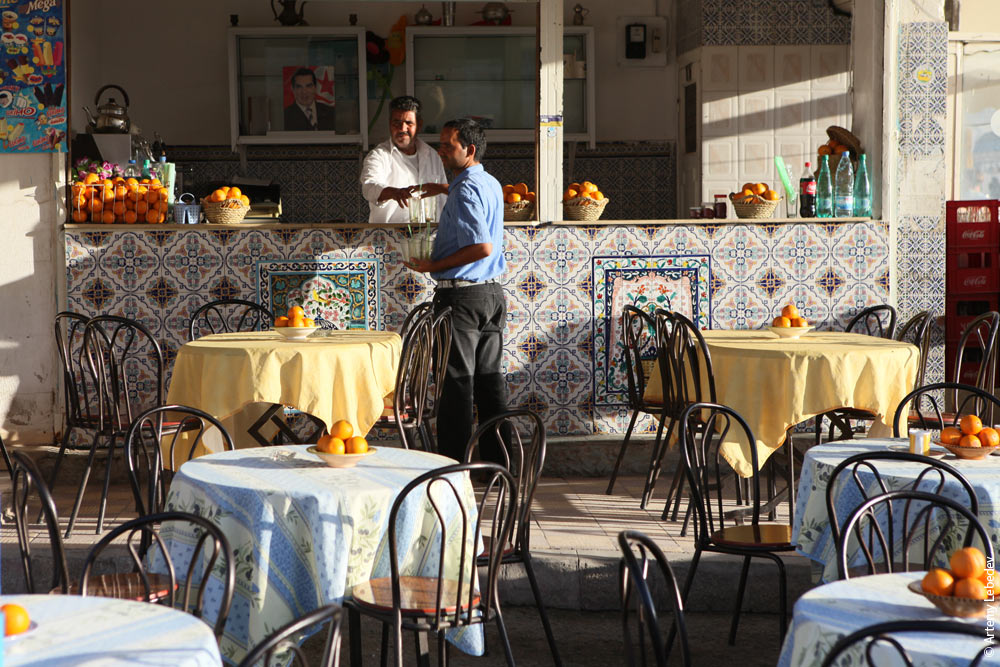 * * * There are kilometer marker posts along all the roads in Tunisia. The posts are stout and have semi-circular colored tops; the color indicates the width of the road (red means wider than 7.5 meters, green—from 5.5 to 7.5 meters, the rest of the roads have markers with yellow tops). 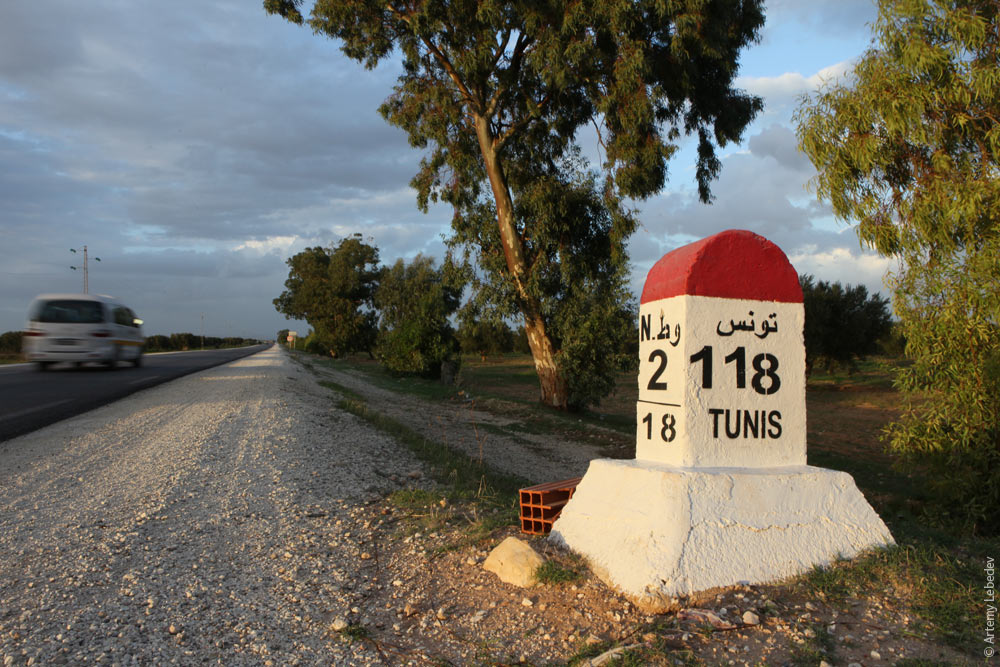 Who would’ve thought I’d encounter nearly identical marker posts a couple of months later in Vietnam? (The only thing the two countries have in common is a history of French colonization.) |